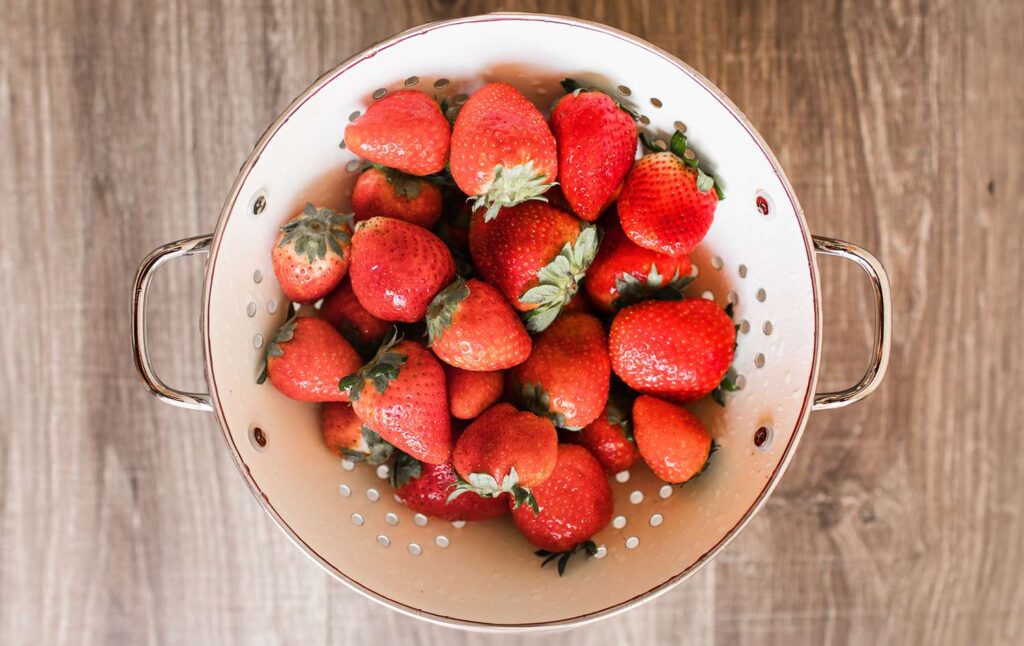Strawberries are among the most popular berries and are likely part of your produce rotation. But whether you add them to a dessert, eat some as a snack, or blend them into your smoothie, they should be washed before using. And it’s important to know how to clean them properly because strawberries are prone to carrying contaminants. Ahead, we spoke to two culinary experts who share the best tips and techniques for cleaning these favorite fruits.
Why You Need to Clean Strawberries
You may think the strawberries you bought at the grocery store or farm stand look clean, but strawberries are often featured (in first place, no less) in the Environmental Working Group’s “Dirty Dozen,” a list of fruits and vegetables most contaminated with pesticides. For this reason, buy organic strawberries when possible and always clean them, says Nathan Lyon, chef, cookbook author, and host of A Lyon in the Kitchen on Discovery Health.
Moreover, strawberries are sold in a package that allows airflow in and out, which is great for keeping the berries fresh, says Ann Ziata, chef and cooking teacher at the Institute of Culinary Education. But due to that packaging, the fruit can be easily exposed to dirt during its journey from the farm to the truck, and again from the grocery store shelves to your kitchen. This presents many opportunities for cross-contamination, so it’s essential to wash strawberries before eating them, says Ziata.
How to Clean Strawberries
Washing strawberries is not difficult. In general, a quick cold-water rinse is enough to clean strawberries, says Ziata. Simply place the strawberries in a colander then hold it under cold running water to rinse the fruit.
How to Clean Strawberries With Vinegar
Using distilled white vinegar is considered the best way to deep clean strawberries; fans say the vinegar will help remove mold spores, potentially keeping them fresh for longer. It also has its detractors who say the vinegar harms the strawberries and can impact their flavor.
To clean strawberries using vinegar:
- In a large bowl, prepare a 3-to-1 mixture of water and distilled white vinegar.
- Place the strawberries in a colander, then submerge the colander in the bowl.
- Soak the strawberries for about one minute, swirling them gently.
- Rinse the berries for 30 seconds under cold water to remove the vinegar.
How to Clean Strawberries With Baking Soda
Another option for deep-cleaning strawberries is to wash them in baking soda. Here’s how, per Ziata:
- Prepare a large bowl of cold water with 1 teaspoon of baking soda for every 4 cups of water.
- Add the strawberries.
- Let sit for five minutes.
- Place the strawberries in a colander and rinse under cold water for 30 seconds.
How to Dry Strawberries
After cleaning, strawberries should be dried. To do so, simply lay the berries out on a clean kitchen towel for a few minutes, says Lyon. This will help reduce moisture, preventing premature spoiling and keeping extra water out of any recipes you may be using the strawberries for.
Tips for Cleaning Strawberries
Wash Your Hands Before Cleaning Strawberries: Regardless of the method you choose, cleaning strawberries will be pointless if your hands aren’t clean. Before handling the berries, wash your hands with soap and water for at least 20 seconds, as recommended by the U.S. Food and Drug Administration (FDA). This will lower the risk of cross-contamination during the cleaning process.
Only Wash Strawberries Right Before Using Them: Avoid cleaning strawberries before storing them in the refrigerator. Instead, wait until you’re ready to use them. “No matter how well you dry the berries after washing, there will likely be some excess moisture on the surface,” explains Ziata. This extra moisture can encourage mold growth and speed up spoilage, ultimately shortening its shelf life, says Lyon—so it’s best to wash strawberries just before using them.
Skip the Soap: Although soap is necessary to clean our hands and equipment, it shouldn’t be used when washing fruit, including strawberries. Soap can expose strawberries to contaminants, potentially making them unsafe to eat, per the FDA.
Use a Clean Towel When Drying Strawberries: After washing strawberries, always use a clean towel to dry them. Dirty towels can re-introduce dirt, debris, and germs.
